
In the Field: Tracking Mast Production
by Anna Mitterling, Wildlife Cooperative Coordinator
 What is MiMast? MiMast is an application that allows you to track mast production on your property. Examples of mast include acorns, berries, and other fruits or nuts that trees and shrubs produce.
What is MiMast? MiMast is an application that allows you to track mast production on your property. Examples of mast include acorns, berries, and other fruits or nuts that trees and shrubs produce.
Why Use it? Mast crops have a direct impact on wildlife productivity and survival, and being able to track the productions cycles of wildlife mast producing plants can help you as a manager understand your habitat’s ability to produce mast. Because this application is used statewide, you are able to request reports that include mast production results in your area. Please note that all information you provide is confidential and the locations are not provided in the reports. County level reporting is provided.
All you have to do is download the application, create an account, and follow these three easy steps!
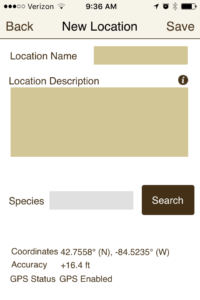
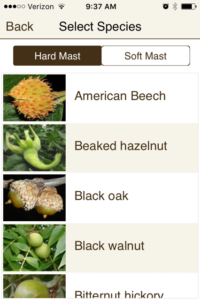 Step one: Choose a Location
Step one: Choose a Location
I manage my 12 acres for wildlife. I want to better understand what benefits my habitat is providing for deer, turkey, birds, etc. Plus, I live there, so it is really easy to take walk on my back 10 and document a couple mast producing plants.
In the application, you click ‘new’ in the upper right-hand corner. You can name the location (I name mine the species that is at the location) and then put in a location description. This is to help you find that plant in the future. You then click the ‘search’ button and will be able to select the species you are tracking.
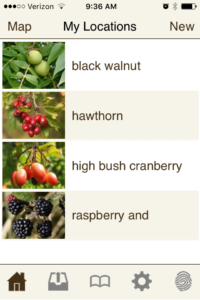
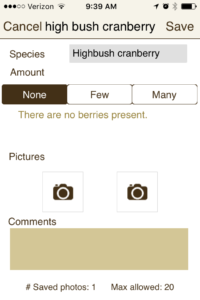 Step two: Make an Observation
Step two: Make an Observation
On my property, I currently have four trees/shrubs I track. These plants can be easily found again and will be tracked on an annual basis. The concept of this application is that you revisit the same plants each year to track their production.
In the application, you click the location you want to add an observation to. In the image on the left, I would click on ‘high bush cranberry’ if I was at my cranberry bush. You then click ‘new observation’ and the screen on the right comes up. You select ‘none, few or many’ and click ‘save.’

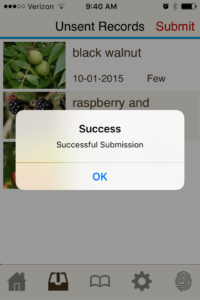 Step three: Send your Observation
Step three: Send your Observation
Once you have gone through the process of creating the observations, they store on your phone. To submit them to MSU, you need to send them in. You simply click ‘submit’ and once the observations have been sent, you will get the screen on the right.
Easy as Pie! Have fun tracking your Michigan Mast!
For more information, please go to http://www.mimast.org/
